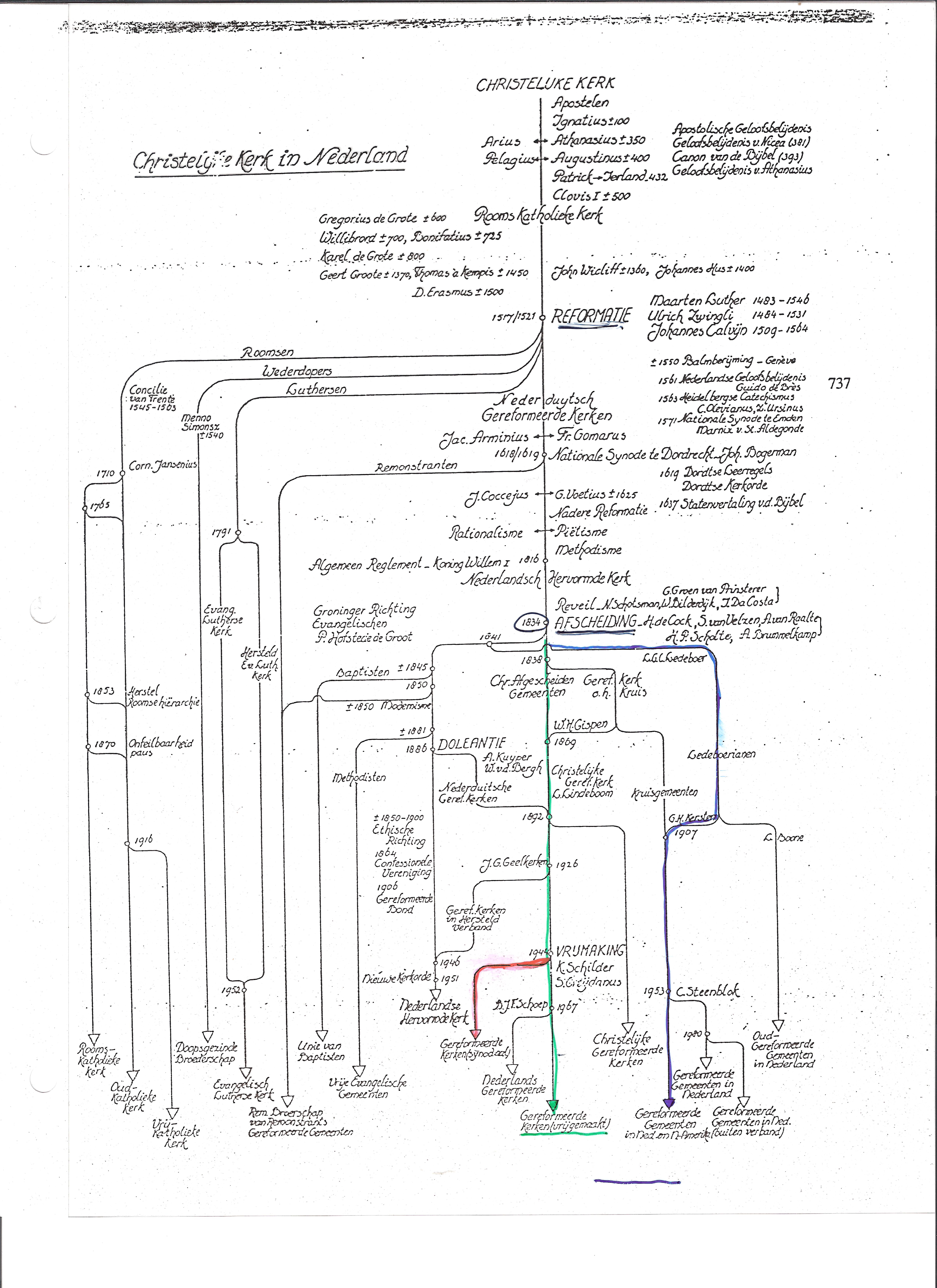The Christian Church in the Netherlands


If you’ve studied Dutch church history, you may find yourself confused by all the splits and schisms. It can get a little confusing. Above is a diagram that may be helpful. You can download it here as a .pdf as well. At the moment I don’t know where it came from, but its author was obviously connected with the Gereformeerde Kerken — Vrijgemaakt (Reformed Churches — Liberated). Note the direct line between the apostles and the Gereformeerde Kerken — Vrijgemaakt (Reformed Churches — Liberated, our sister churches in the Netherlands). This is reflective of an older (and, I would say, erroneous) way of thinking about the church and church history, i.e. that there can be only one true church in any given country, and that one true church carries on the line from the apostles to today. Thus, in 1834, the Afscheiding (the Secession) carries on the line from the apostles — it’s the Hervormde Kerk that breaks. In 1886, the Doleantie brings some of the churches closer to the true line, but they really only get put back in the true line with the Union of 1892. Since the Christelijke Gereformeerde don’t join the Union of 1892, they fall out of the line. Finally, in 1944, it’s the Synodical churches that break with the true line — the Liberated churches carry it on. The diagram is not complete — it does not indicate more recent splits or unions. So, for instance, we don’t see the Protestantse Kerk in Nederland — a church produced by a union of the Synodical GKN, Hervormde, and Lutheran churches some years ago.


